Calling all emerging winemakers – 14th YGOW now open
Registrations are now open for the 14th annual Young Gun of Wine, designed to celebrate and showcase both young wine labels and winemakers on the rise.
Caillard, a Master of Wine and co-founder of Langton’s auction house, brings over four decades of experience to this ambitious project. His lifelong dedication to Australian wine is reflected in the meticulous detail and passionate storytelling that characterise The Australian Ark.
The Australian Ark is not just a historical account; it is a celebration of the challenges, triumphs, and unique culture that define Australian wine. Through 1,760 pages and over 1,100 images, Caillard weaves a narrative that is both informative and engaging, highlighting the influence of wine on Australia’s social, economic, and political fabric. This work promises to be an essential reference for wine enthusiasts, historians, and industry professionals, sparking discussions and debates about Australia’s place in the global wine landscape for years to come.
We caught up with Andrew to discuss the agony and the ecstasy of this undertaking, Australia’s forgotten wine past, his Master of Wine journey, and the six people from Australia’s wine history that he’d love to gather for a dinner party…
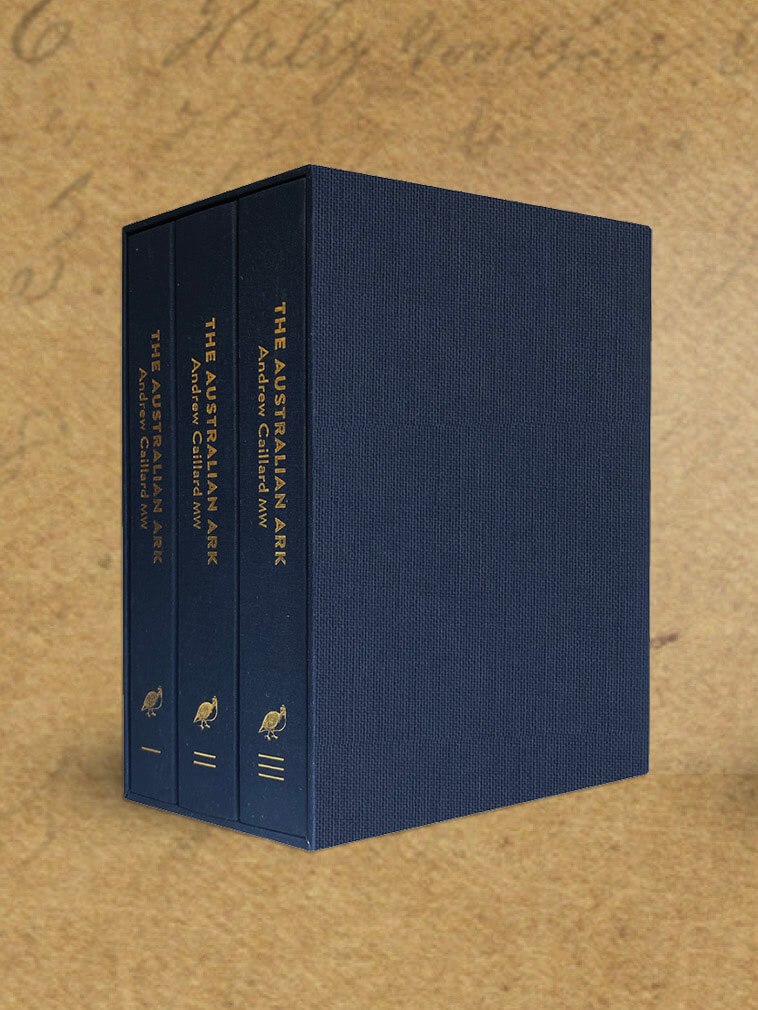
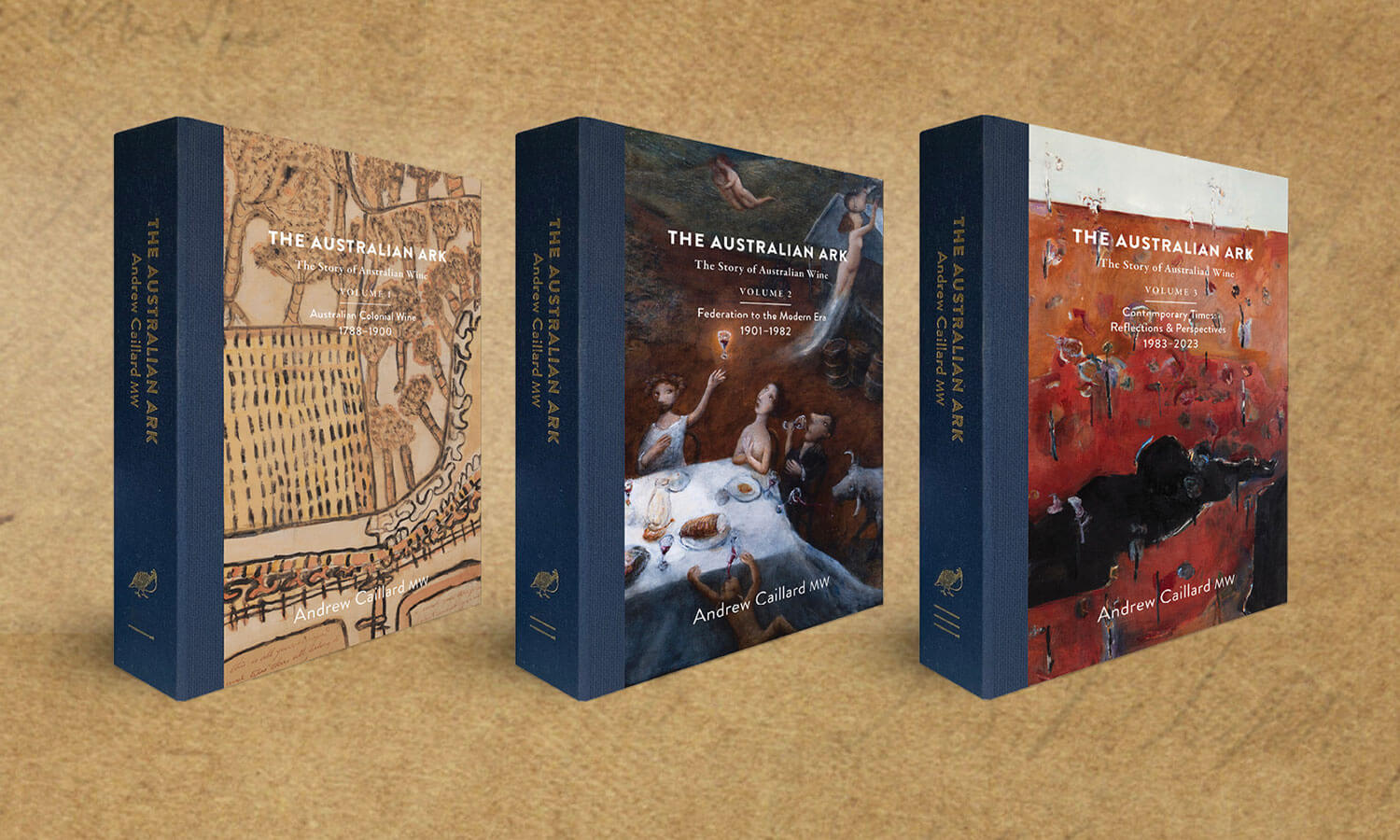
YGOW: What was the genesis of The Australian Ark?
ACMW: I began writing a history of Australian wine 18 years ago, but the ambition was to update and expand Dr Max Lake’s Classic Wines of Australia (1966); a beautifully written book which captures concisely the ambitions and the successes of the industry at that time. I thought this work could be a useful companion for collectors of fine wine. I was quite well advanced when my world changed with business partnership challenges and the subsequent sale of Langton’s to Woolworths.
Although I was researching the history of Australian wine for articles and presentations, I returned to a full-on writing schedule when the previous Langton’s Classification was being prepared. I believed that we needed to frame our 19th and early 20th Century beginnings within the context of Australia’s fine wine agenda. But this ambition was not supported in the way I envisaged, and so I started again with the original work and pressed on. Momentum was further activated by Stuart Barclay, then of Wine Australia, who commissioned me to write articles on history, but I could never send him anything because I was continuously moving forwards and backwards through the years and decades. I was loving the research and running down all sorts of rabbit holes completely fascinated and absorbed by Australia’s rich but largely untold wine story.
YGOW: And what was the end point?
ACMW: I had reached 350,000 words by the middle of the Covid crisis. I had found that the extra time at home during lockdown was brilliantly useful in getting the manuscript to a first completed draft. At the 70th anniversary celebrations for Penfolds Grange in 2021, I had a conversation with wine writer Angus Hughson about the project. We had both managed to get to Adelaide during another partial lockdown in Sydney. He surprisingly offered to help me get the work to publication. When he received the manuscript, he was probably quite shocked at the scale and what he had just got himself into. But he pulled in a friend called David Longfield, a professional publisher and we formed an editorial team, which also included Siobhan Gallagher in France and the remarkably resourceful Tijana Laganin in Adelaide.
Then Angus and I worked on a prospectus to raise funds from family, friends and wine industry colleagues. In the meantime, the manuscript was refined, revised and expanded to roughly 500,000 words. This translated to three volumes, 1762 pages, around 1100+ images – all weighing in at 5.3 Kgs. We also set up The Australian Ark Project as a not-for-profit enterprise with the objective of publishing and printing everything in Australia. Ultimately it is a $1 million project and from my perspective completely vocational. This was the only way the book could have ever been published.
“I took two years and ten weeks to successfully complete the Master of Wine programme. It took me 18 years to write The Australian Ark.”
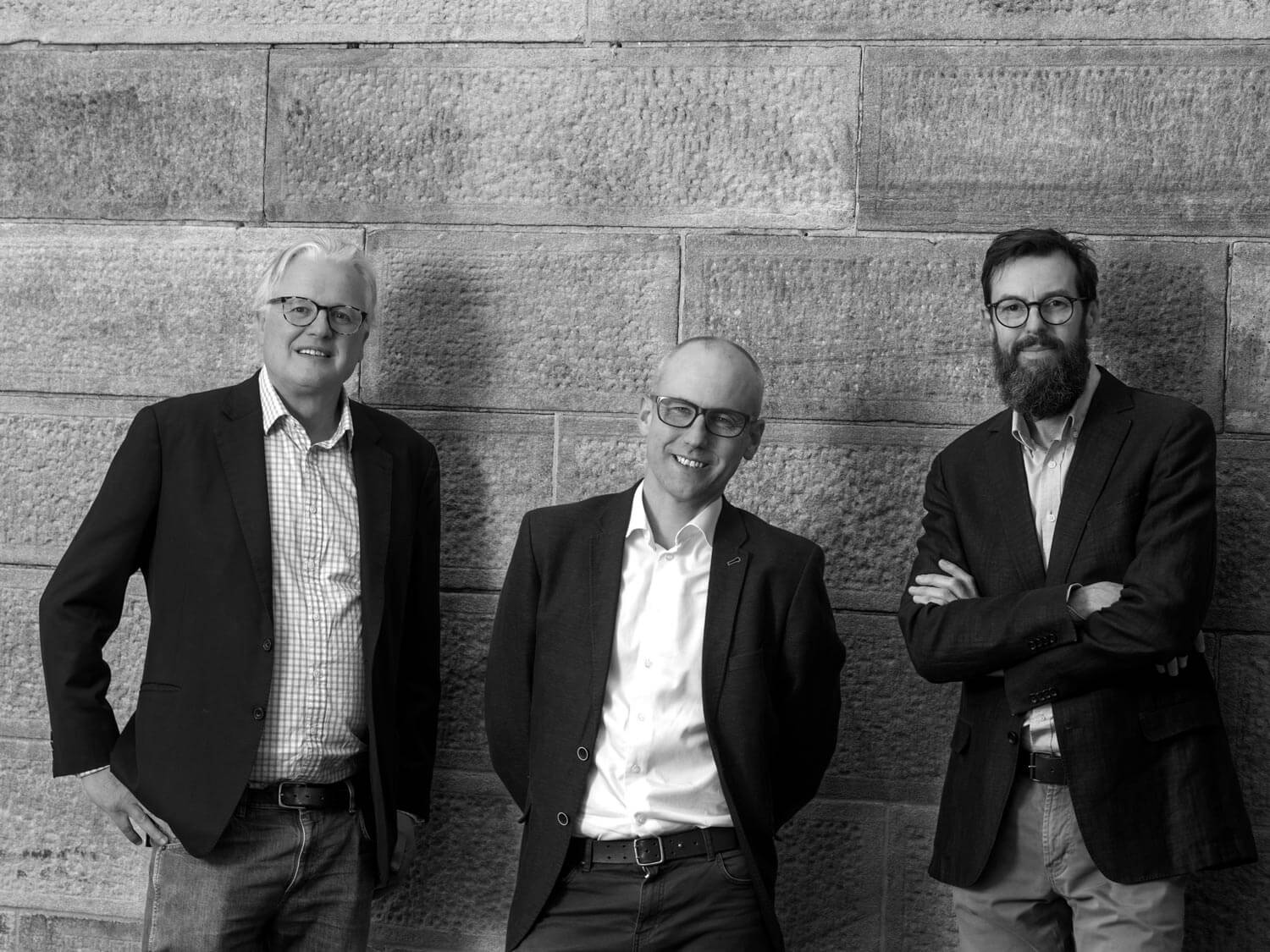
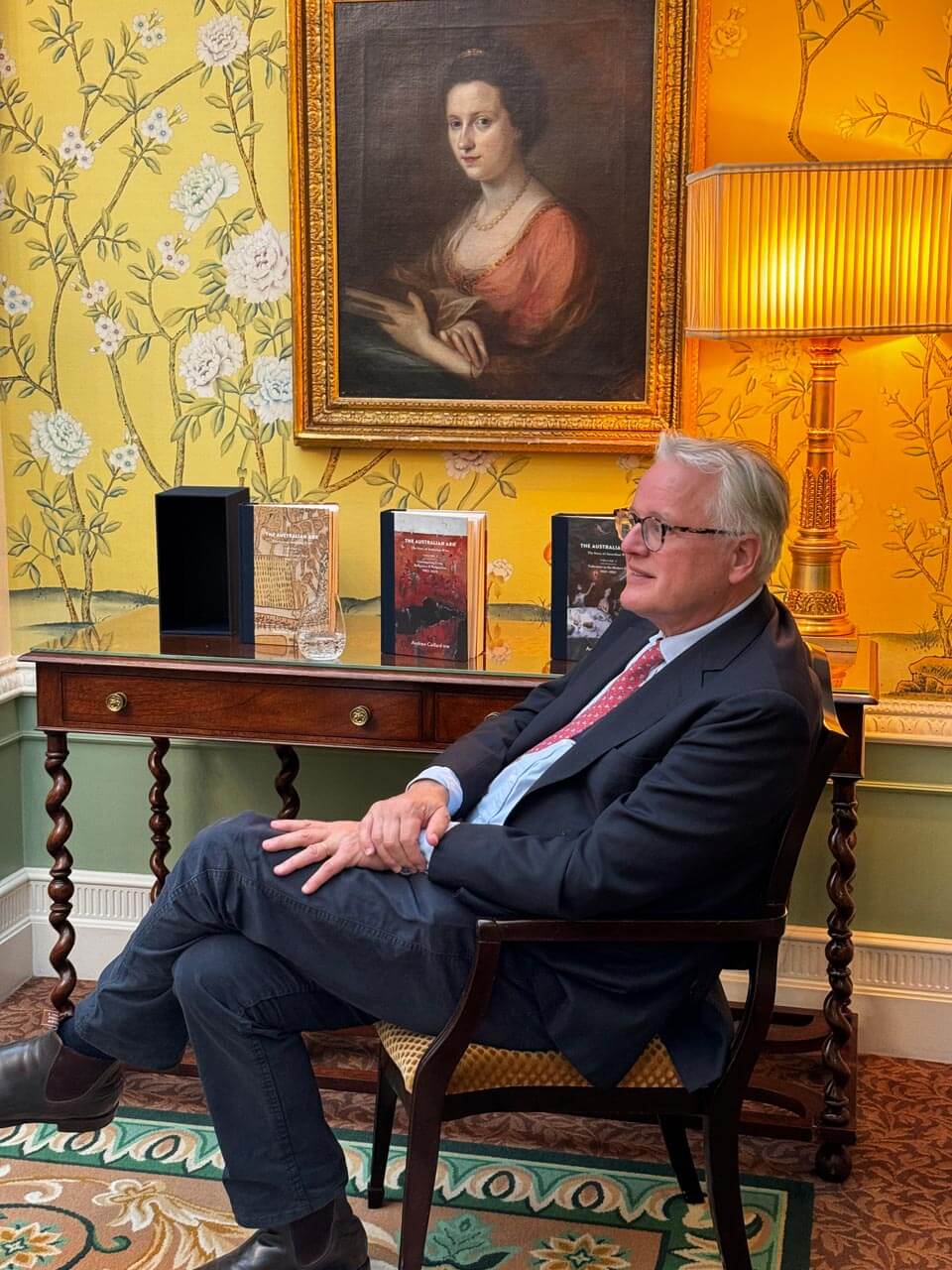
YGOW: You were born in the UK. When did you decide to come to Australia?
ACMW: Yes. I was born in Cambridge in 1959. My father was a serving officer in the Royal Air Force (he retired as an Air Vice Marshal). He had previously been seconded to the Royal Australian Air Force where he was instructing pilots how to fly Canberra Jet Bombers. He married my Australian mother a little while later, so I was brought up as a half-halfie. Although I was educated at Worth School in England, I eventually attended Roseworthy Agricultural college (1983-1985) in South Australia, where two of my cousins had also studied (John Reynell Walters and John Reynell).
YGOW: Despite your English upbringing, your roots are surprisingly deep in Australian wine history. Tell us about the wine culture you grew up in?
ACMW: Through my maternal grandmother Lydia Crawford (née Reynell) I am directly related to John Reynell, the founder of Reynella and one of the first vignerons in South Australia. Walter Reynell, was my great-great grandfather and was connected with the development of agriculture and the wine industry in the Province/State during the colonial and early Federation era. Asides from his own Chateau Reynella, he was also the superintendent at Chateau Tanunda in the Barossa Valley.
My great grandfather Carew Reynell (who was killed at Gallipoli in 1915) managed the vineyards at Reynella. Reynell Selection Cabernet Sauvignon – planted widely in Coonawarra – is a reminder of the family’s contribution to South Australian wine. My grandmother Lydia and my grandfather Ken Crawford were also keen wine people with many friends in the wine industry. I came across some notes written to them from Max Lake and realised that many of the wines mentioned in his book Classic Wines of Australia were enjoyed at Mount Annan – my grandparents property near Holbrook in New South Wales. Separately to this we had a sixth form wine society at Worth and wine was just something quite easily available (albeit supervised) when I was a teenager at school.
YGOW: What was your first job in wine?
ACMW: My cousin Michael Cubitt suggested I went into the wine trade and helped secure me a job in Bordeaux as a stagaire. I joined the vendange at Chateau Paveil de Luze in the Medoc and then worked in the cellars of Alfred de Luze et Fils on the Quai de Chartrons in 1979.
YGOW: Your career developed in auctioneering at Rushton’s and then into Langton’s as Australia’s leading wine auctioneer and also as the author of the Langton’s classification. But you’ve always had significant interests outside of your career as a painter and a winemaker. What drew you into these very diverse paths?
ACMW: I have always loved painting and imagined that I might make a living from it! But instead it has been a lifelong hobby since I was a child. It’s a very meditative thing to do as well as challenging and infuriating at times. But the discipline of starting and finishing paintings, together with the long hours of meticulous work, has filtered into my life as an auctioneer and wine expert. Tamara Grischy (who now heads up Langton’s) used to call it the Caillard Paradox – seemingly untidy and disorganised yet quite the opposite with the finished project.
I started producing wine because I wanted a project that was solely ours. At Langton’s every creative thing I did was jointly signed off, but the partnership was not equal. Producing wine was a very enjoyable project for a while but we stopped after ten years because there were too many distractions – making two documentaries (Red Obsession and Blind Ambition) with Warwick Ross and Rob Coe – being two of them.
“I wrote The Australian Ark because the wine industry has largely forgotten its past. For a start we should be highlighting the fact that we have the largest acreage of surviving 19th Century and early 20th Century vineyards in the world. We also have the largest acreage of ancient pre-phylloxera genetic material in the world. This should be the foundation of a premiumisation strategy.”
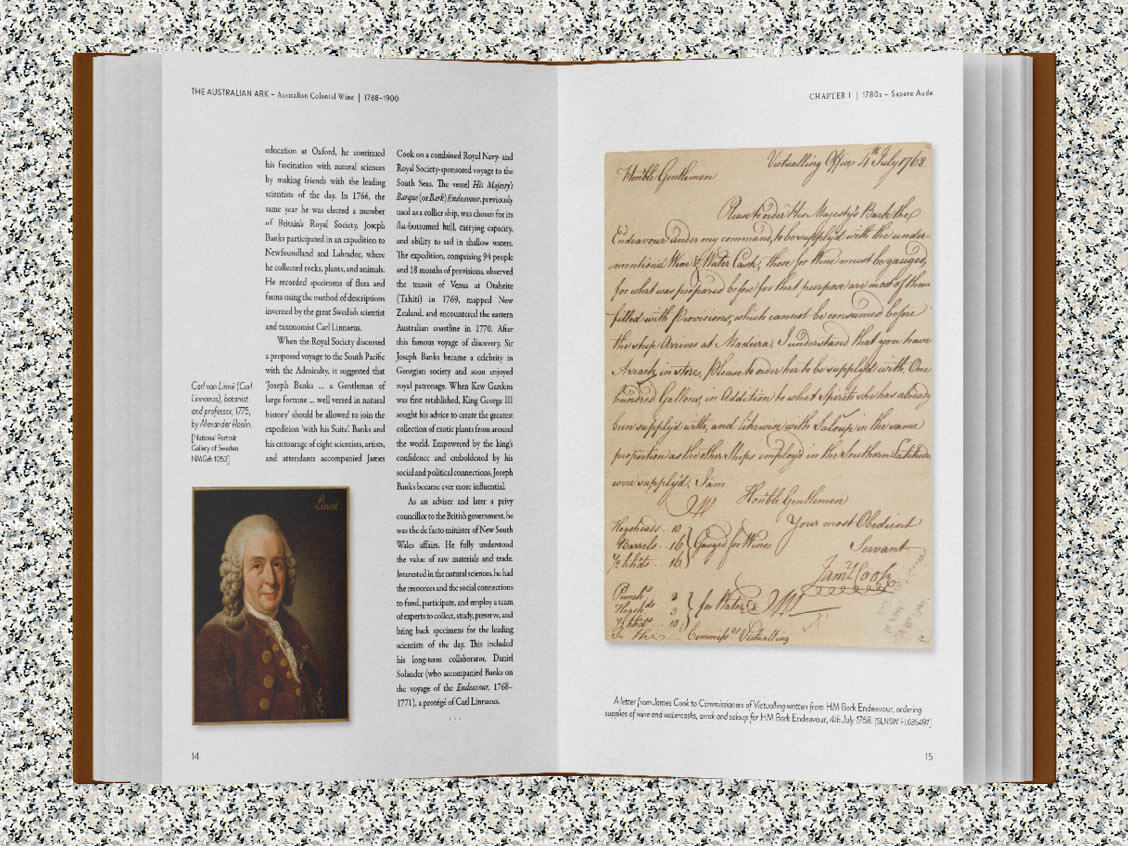
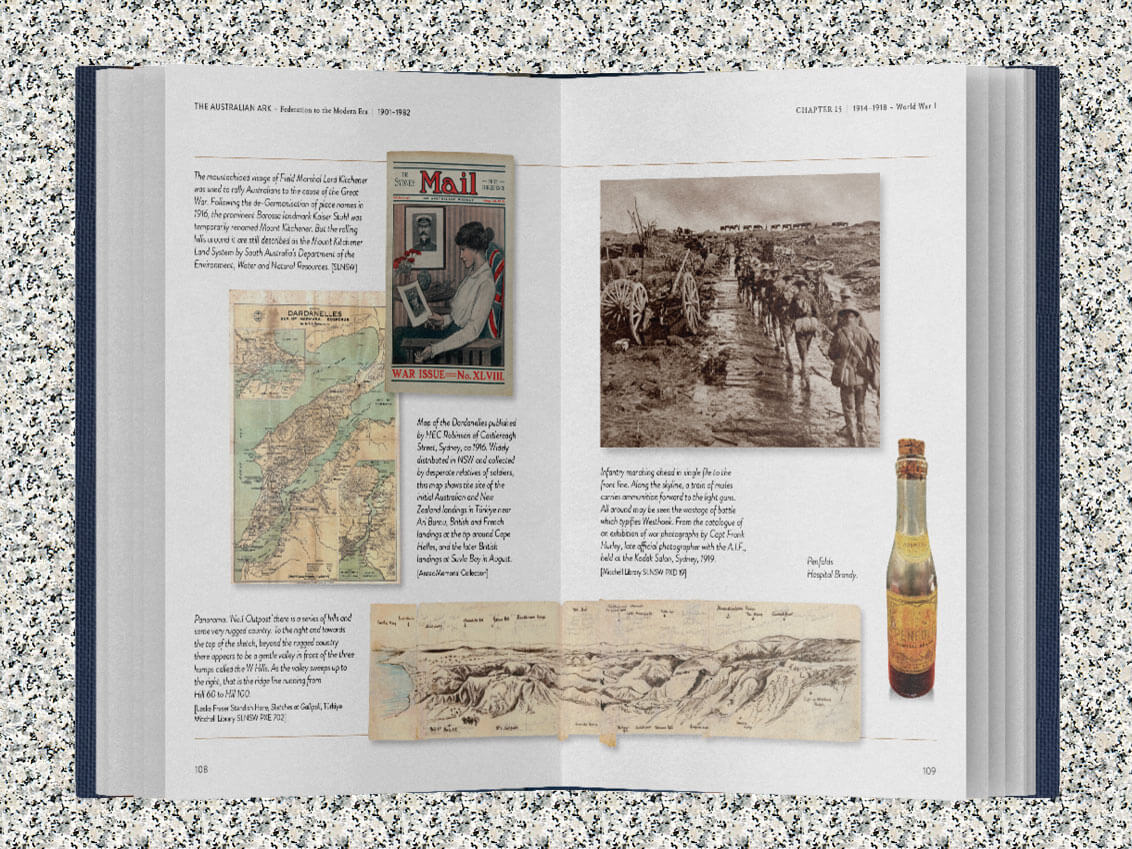
YGOW: You have a Master of Wine. What was more difficult – writing this three-volume book or getting your Master of Wine?
ACMW: I took two years and ten weeks to successfully complete the Master of Wine programme. It took me 18 years to write The Australian Ark. The MW was probably more difficult because there was no certainty I would pass. But in hindsight I put more research and work into the book.
YGOW: What was your greatest discovery or surprise in researching for the book?
ACMW: Finding an advertisement offering ‘1824 Camden Park Australian Red Burgundy – First Grewth’ for sale. The wine industry community erroneously believes that we have evolved from a fortified winemaking culture. Yet many people believed that Australia would become the France of the Southern Hemisphere and that its wines would become comparable to the great wines of Bordeaux, Burgundy and Champagne.
YGOW: How does one approach the task of writing this book – the history of Australian wine?
ACMW: No commercial publisher would have taken on The Australian Ark as envisaged by myself. The numbers simply don’t work. Our crowd funding model together with a highly motivated and committed editorial team allowed us to produce a book of exceptional quality standards. Family, friends and wine industry colleagues have been brilliant in supporting us. Without this financial contribution, we would not have been able to publish the book. As a defacto co-publisher as well as author, I was able to have more control. The original budget was for 1200 pages, so our costs blew out. This has impacted cashflow and required a gap to be funded, but ultimately we all knew that doing things properly was a core part of the project.
Working with Siobhan and David as editors was very detailed and time consuming but always delightful. Angus also contributed greatly by analysing the manuscript and suggesting where deletions or additions needed to be made. Dr Stephen Gapps gave feedback on the early colonial history and material relating to First Nations people. We had quite a few people looking at parts of the manuscript. For instance wine writer Tony Love read through volume 3 to check continuity.
The biggest challenge was converting the first draft manuscript into a ready to publish document. Some parts were a bit of a dog’s breakfast and so revisions, deletions and additions were all part of the process. Angus and David were brilliant in the way they handled these challenges. Having worked with publishing books before, I was well prepared for the task ahead and so the editorial process was very enjoyable. The picture editing was also very challenging. Angus Hughson also worked as picture editor with the assistance of Tijana Laganin, David and myself.
YGOW: What is the Australian identity, and how has it revealed itself over the generations, and where do you see its future in the global theatre?
ACMW: Every country and landscape have their own character. Although there is always a tug of war match between nature and nurture, the best wines of the world are centred on the middle where the sum is greater than the two parts. It’s more complicated than this of course but the world of wine is full of beautiful wines that show singularly of style and voice of place.
The Australian wine industry is going through a traumatic period as a result of difficult trading conditions, the impact of trade sanctions by China despite tariffs being lifted, and shifting or dwindling demand. It is natural enough to be chasing trends like natural and no/lo wines,but ultimately our identity should be shaped by our history. I wrote The Australian Ark because the wine industry has largely forgotten its past. For a start we should be highlighting the fact that we have the largest acreage of surviving 19th Century and early 20th Century vineyards in the world. We also have the largest acreage of ancient pre-phylloxera genetic material in the world. This should be the foundation of a premiumisation strategy. In the meantime, my advice to everyone reading this, is to buy more Australian wine, especially from cellar door/ directly as this is massively useful for wineries.
YGOW: What do you love most about wine?
ACMW: The people. Wine people are generally moved by culture, shared experiences and doing something meaningful in their lives.
YGOW: If you were to have a dinner party with six people from the history of Australian wine, who would you invite and why?
ACMW: John Macarthur – before he went mad – because I would like to know more about his time in England after the Rum Rebellion.
Sir William Macarthur – because he was a key protagonist in getting a colonial wine industry going.
Mary Penfold – because she was a woman in a man’s world yet powerful and in control.
Peter Bond Burgoyne – because of his key role during the red wine export boom of the 1890s/1900s
My great grandfather Carew Reynell – because I would like to understand his ambitions for his future which never came. What would have the industry looked like if we hadn’t lost so many young men during the First World War?
Ron Haselgrove – because he was an extraordinary entrepreneur who ruthlessly shaped Australia’s post-war ambitions.
There are many other historical figures – men and women – who have contributed greatly to the story of Australian wine, but I am thinking about the conversations that would take place around the table and the gaps I could fill! In addition, I haven’t included anyone from contemporary times.
YGOW: If you could plant a new vineyard anywhere in Australia, where would you go and what would you plant?
ACMW: Depends on what day you ask. Monday – Eden Valley/Barossa; Tuesday – Margaret River; Wednesday – Mornington Peninsula; Thursday – Coal River Valley; Friday – Adelaide’s Hills; Saturday – Beechworth; Sunday… somewhere else away from urban sprawl and under the southern stars.
I would plant with heirloom material derived from ancient genetic vinestock of 19th and early 20th Century origins
Please sign in or create account as candidate to bookmark this job
Please sign in or create account to save this search

Please sign in or create account as candidate to create a resume